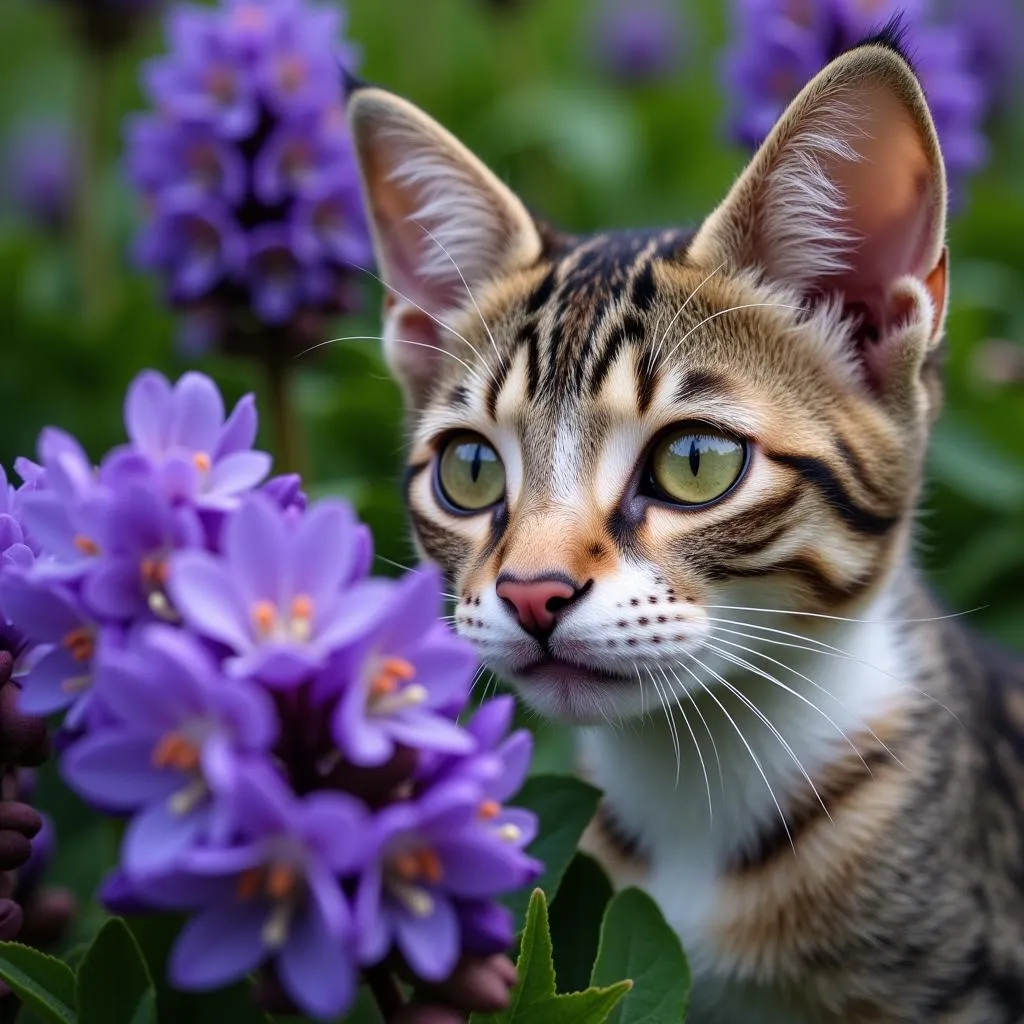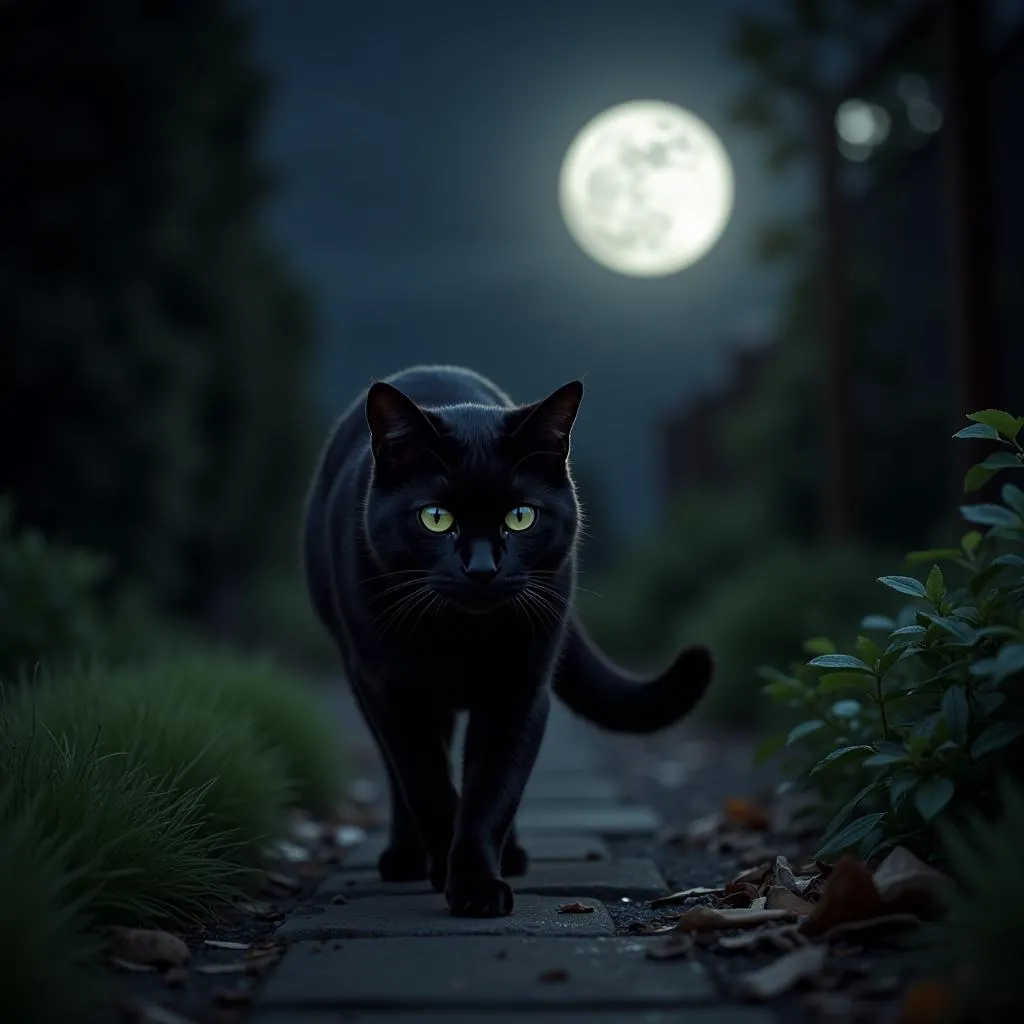For years, the question of whether cats can see the color purple has puzzled pet owners and scientists alike. While we marvel at their grace and independence, understanding their visual perception offers a glimpse into their unique world. This article delves into the science behind feline vision, exploring the fascinating truth about cats and the color purple.
Deciphering the Feline Color Spectrum
Unlike their human companions who possess trichromatic vision, cats have dichromatic vision. This means their eyes have two types of color-sensitive receptors, or cones, compared to our three. These cones allow them to perceive a limited range of colors, primarily blues, greens, and yellows.
 Cat Gazing at Purple Flowers
Cat Gazing at Purple Flowers
So, Can They See Purple?
While cats can’t perceive purple in the same way humans do, they’re not entirely blind to it. Their vision allows them to see purple as a shade of gray, similar to how humans with color blindness might perceive it. This is because the wavelength of purple light falls outside their limited color spectrum.
Beyond Color: The Strengths of Feline Vision
Even though their color vision is limited, cats possess other visual advantages that make up for it.
Superior Night Vision
Cats are renowned for their exceptional night vision, which is significantly better than humans’. Their eyes have more light-sensitive cells called rods, allowing them to see clearly in low-light conditions where humans would struggle.
 Cat Navigating in Moonlight
Cat Navigating in Moonlight
Enhanced Motion Detection
Cats are masters at detecting even the slightest movements. This ability stems from a higher number of specialized neurons in their visual cortex, making them highly adept at hunting and spotting prey.
Wider Field of View
With a wider field of view than humans, cats can perceive a larger area of their surroundings without turning their heads. This panoramic vision aids in hunting and provides them with greater spatial awareness.
Understanding Your Cat’s Visual World
While we may never fully comprehend the complexities of how cats perceive the world, understanding their visual capabilities helps us appreciate their unique perspective. The next time you encounter your feline companion, observe their reactions to different colors and movements. You might be surprised by their acute senses and the subtle ways they interact with their environment.
FAQs about Cat Vision
1. Do cats see in complete darkness?
No, cats cannot see in complete darkness. However, they can see exceptionally well in low-light conditions due to the structure of their eyes.
2. What colors do cats see best?
Cats see blues, greens, and yellows most vividly, similar to humans with red-green color blindness.
3. Why do cats’ eyes glow in the dark?
Cats’ eyes don’t actually glow. The reflective layer behind their retinas, called the tapetum lucidum, amplifies light entering the eye, making their eyes appear to glow in low-light conditions.
4. How does a cat’s vision compare to a dog’s vision?
Both cats and dogs have dichromatic vision, but dogs have a slightly wider field of view. However, cats excel in low-light vision and motion detection.
5. Can cats see ultraviolet light?
There is no definitive answer, but some studies suggest that cats might be able to perceive some ultraviolet (UV) light, which is invisible to humans.
6. Are there any health problems that can affect a cat’s vision?
Yes, cats can experience vision problems like cataracts, glaucoma, and retinal degeneration, just like humans. Regular veterinary checkups are crucial for early detection and treatment.
Do you have other questions about how to enhance your home with vibrant colors?
Contact us today at 0373298888 or email us at [email protected]. Our team of color experts at Color Box Hà Nội is here to help you create a visually stunning and inspiring space that reflects your unique style and personality. Visit us at 86 Cầu Giấy, Hà Nội, for a personalized consultation.

